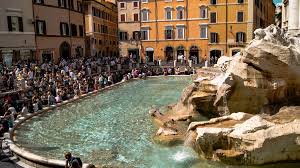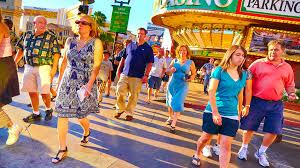Traveling opens doors to new cultures, experiences, and memories. But let’s face it—sometimes, the excitement of exploring a new destination can lead us straight into tourist traps. These are the overpriced restaurants, overcrowded attractions, and generic gift shops that offer little value but drain your wallet and time.
The good news? With a little planning and awareness, you can avoid these common pitfalls and enjoy more authentic travel experiences. Let’s explore how to spot tourist traps—and more importantly, how to prevent falling into them on your next adventure.
What Exactly Is a Tourist Trap?
A tourist trap is any place or experience designed primarily to make money from visitors rather than provide genuine cultural or historical value. They often feature:

- Inflated prices for food, drinks, or souvenirs
- Crowds of people taking the same staged photos
- Aggressive vendors pressuring you to buy
- Experiences that feel “manufactured” rather than authentic
Think overpriced coffee near famous landmarks or restaurants with big “English menu” signs and pushy waiters.
How to Spot a Tourist Trap
1. Check the Menu
Restaurants in tourist-heavy areas often have glossy photo menus in multiple languages. While convenient, this usually signals high prices and mediocre food. Instead, look for smaller spots filled with locals, where menus are handwritten or only in the local language.
2. Watch the Souvenir Shops
Rows of identical T-shirts, keychains, and magnets are a telltale sign of a tourist trap. Authentic souvenirs usually come from artisan markets, local cooperatives, or family-owned stores.
3. Notice the Crowd
If you can barely move for the selfie sticks, you’re probably in a hotspot designed for mass tourism. While some iconic attractions are worth the visit, don’t be afraid to explore side streets or lesser-known neighborhoods to escape the chaos.
4. Listen to the Pitch
Street vendors offering “exclusive tours,” cheap jewelry, or miracle products are usually more focused on sales than genuine experiences. A firm but polite “no, thank you” keeps you moving.
How to Prevent Tourist Traps
1. Do Your Research in Advance
Read travel blogs, watch vlogs, or check forums like TripAdvisor or Reddit to learn from fellow travelers. Locals and seasoned tourists often share warnings about overpriced areas and suggest hidden gems nearby.
2. Ask Locals for Recommendations
Taxi drivers, shopkeepers, or even hotel staff can point you toward authentic restaurants and activities. Locals usually know where to get the best meals at fair prices, far from the tourist buzz.
3. Venture Beyond the Main Streets
Take a turn off the main square, and suddenly prices drop while authenticity rises. Walking just a few blocks away from big attractions can lead you to cozy cafés, charming boutiques, and quieter sights.
4. Use Technology Wisely
Apps like Google Maps and Yelp allow you to filter restaurants and attractions by ratings and reviews. Look for places highly rated by locals rather than just tourists.
5. Travel in the Off-Season
Visiting destinations during shoulder or off-peak seasons means fewer crowds and lower prices. Without the heavy tourist traffic, businesses are less likely to inflate costs or cut corners.
Why Avoiding Tourist Traps Matters
It’s not just about saving money. Steering clear of tourist traps allows you to:

- Enjoy authentic cultural experiences
- Support local businesses that rely on genuine community connections
- Escape stress from overcrowded spaces
- Make meaningful memories that go beyond staged attractions
In the end, you’ll feel like you’ve truly connected with the destination rather than just skimmed its surface.
Final Thoughts
Tourist traps can be disappointing, but they’re not inevitable. With awareness, curiosity, and a willingness to explore beyond the obvious, you can discover the heart of any destination. The key is to slow down, seek authenticity, and trust your instincts.
So, the next time you travel, ask yourself: Am I experiencing this place, or just the version built for tourists? By choosing the first option, you’ll walk away with stories and memories that truly belong to you—not just another overpriced magnet for your fridge.






